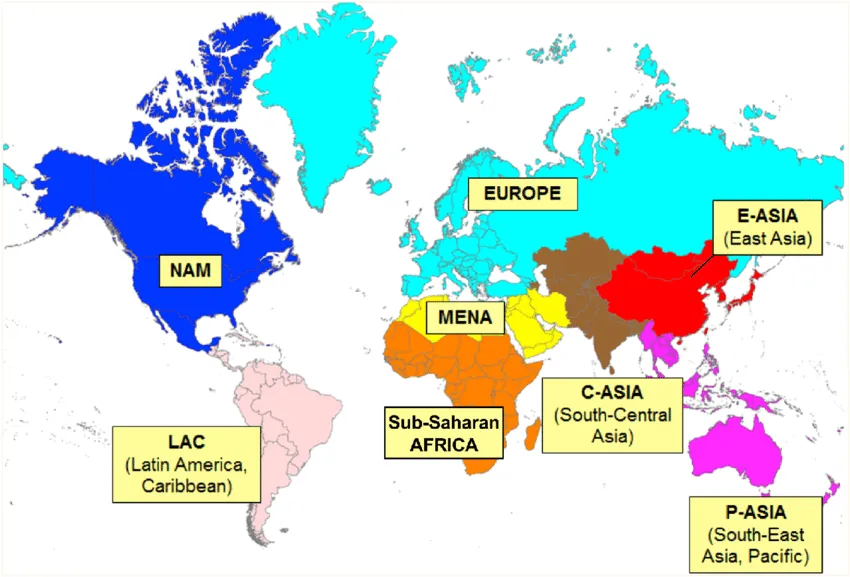In today’s fast-paced world, convenience and speed are of utmost importance. This is especially true when it comes to financial transactions, where time is money. With the rise of digital payments, traditional methods such as cash and cards are slowly being replaced by more innovative and convenient options. One such option that has gained significant popularity in recent years is Google Pay.
Originally launched in 2015 as Android Pay, Google Pay has become one of the leading mobile payment platforms globally. With its user-friendly interface and seamless integration with various apps and websites, it has revolutionized how people make transactions. In this article, we will delve into the latest statistics surrounding Google Pay and explore its growth, impact, and future prospects.

Overview of Google Pay
Google Pay is a digital wallet and contactless payment system developed by Google. It allows users to store their credit and debit card information securely and make purchases at physical stores or online without the need for physical cards. It also enables peer-to-peer (P2P) transfers between individuals using their email addresses or phone numbers.
One of the key features that set Google Pay apart from its competitors is its integration with other Google products. Users can easily access their payment information through Google Assistant, Gmail, and Google Play Store, making the payment process even more seamless. Additionally, it offers rewards and loyalty programs to users, providing them with added incentives to use the platform.
Since its launch, Google Pay has expanded its services beyond just payments and now includes features like budgeting, expense tracking, and money management. Its compatibility with both iOS and Android devices has made it accessible to a wider audience, contributing significantly to its growth.
With all these features and benefits, it’s no surprise that Google Pay has seen a steady rise in usage and adoption over the years. Let’s take a deeper look into the latest statistics surrounding this popular payment platform.
1. User Base and Adoption
According to a report by Statista, there were approximately 138 million Google Pay users worldwide in 2020, with an estimated growth to reach 230 million users by 2023. This strong user base can be attributed to the increasing popularity of digital payments and the convenience offered by the platform.
The adoption rate of Google Pay has also been on the rise, especially in countries like India and the United States. In India, Google Pay saw a significant jump in adoption during the COVID-19 pandemic, with transactions increasing by over 300% in April 2020 compared to the previous year. In the United States, the number of active users grew by 14% in the same period, indicating a steady growth trend.
However, it’s worth noting that despite its impressive numbers, Google Pay still lags behind other major mobile payment platforms such as Apple Pay and WeChat Pay in terms of user base and adoption. But with its continuous expansion and improvements, it may not be long before it catches up with its competitors.
Factors Contributing to Adoption
- Mobile-Friendly Culture: With the widespread use of smartphones globally, people are increasingly comfortable with making payments through their devices. This has paved the way for the adoption of mobile payment platforms like Google Pay.
- Contactless Payments: Due to the ongoing COVID-19 pandemic, there has been a surge in contactless payments. Google Pay’s ability to make seamless and secure NFC-based transactions without the need for physical contact has made it an attractive option for many users.
- Easy Set-Up Process: Another factor contributing to adoption is the simple and hassle-free set-up process of Google Pay. Users can easily add their cards to the app and start using it within minutes.
- Rewards and Incentives: The rewards and loyalty programs offered by Google Pay have also played a significant role in driving adoption. Users can earn cashback, discounts, and other rewards for making transactions through the platform.
2. Transaction Volume
As more users adopt Google Pay as their preferred payment method, the transaction volume has also seen a significant increase. In the first quarter of 2021, there were over 400 million transactions made through Google Pay globally, amounting to a total transaction value of $20 billion.
Interestingly, in India, where Google Pay has a massive user base, it accounted for over half of all digital payments made in the country in 2020. In the same period, it saw a 10x growth in UPI (Unified Payment Interface) transactions, indicating a shift towards digital payments.
Factors Contributing to Transaction Volume
- E-commerce Growth: With the rapid growth of e-commerce, more people are turning to online shopping, leading to an increase in digital transactions. Google Pay’s integration with various e-commerce platforms has allowed users to make quick and secure payments, contributing to the overall transaction volume.
- P2P Transfers: The option to make peer-to-peer transfers through Google Pay has also contributed to its transaction volume. This feature enables users to split bills, transfer money to friends and family, and pay for services directly through the app.
- Cashbacks and Discounts: As mentioned earlier, Google Pay offers various rewards and incentives to its users. This has not only attracted new users but has also encouraged existing users to make frequent transactions, leading to an increase in the overall transaction volume.
3. Regional Breakdown of Usage

Google Pay’s usage is not limited to specific regions, and it has gained popularity in various countries worldwide. However, certain regions have shown higher usage and adoption rates compared to others.
In India, Google Pay is the most popular mobile payment platform, accounting for over 40% of all digital transactions in the country. Its strong user base and rapid adoption in the country can be attributed to its partnership with major banks and e-commerce platforms.
In the United States, Google Pay has seen a steady increase in usage, with its transaction volume growing by 55% in the first quarter of 2021 compared to the previous year. It has also expanded its services to include features like budgeting and expense tracking, making it more appealing to users in the region.
Google Pay has also gained popularity in countries like Brazil, Indonesia, and Japan, where it has seen significant growth in user base and transaction volume. As it continues to expand its services and partnerships globally, we can expect these numbers to keep on rising.
4. Impact on Retail Industry
One of the key areas where Google Pay has made a considerable impact is in the retail industry. With its easy-to-use interface and integration with various POS (point-of-sale) systems, it has enabled retailers to offer a seamless payment experience to their customers.
But it’s not just the ease of use that has made Google Pay an attractive option for retailers. With its loyalty programs and rewards, it has encouraged customers to make more purchases through the platform, leading to increased sales and revenue for businesses.
Moreover, Google Pay has also played a significant role in driving the shift towards contactless payments in retail. As more people become comfortable using digital wallets, retailers are increasingly adopting NFC-enabled payment methods, which provide a safer and faster alternative to traditional cash and card transactions.
Challenges Faced by the Retail Industry
Despite its benefits, Google Pay has also presented some challenges to the retail industry. One of the main concerns is the potential for higher chargeback rates. With the rise of online transactions, the risk of fraudulent activities has also increased, resulting in chargebacks for retailers. This can be a costly issue for businesses, and they need to have proper fraud detection and prevention measures in place to mitigate the risk.
Another challenge faced by retailers is the need for constant updates and maintenance to ensure compatibility with Google Pay’s ever-evolving features. This can be time-consuming and expensive, especially for small businesses.
5. Security Measures

One of the primary concerns for users when it comes to digital payments is the security of their personal and financial information. With numerous data breaches and fraud incidents, trust in online payment platforms is crucial.
Google Pay has implemented various security measures to ensure the safety of its users’ information and transactions. It uses encryption technology to secure card information and employs tokenization to mask sensitive data during transactions. Additionally, it also offers biometric authentication options like fingerprint and face recognition for added security.
Moreover, Google Pay also has a zero-liability policy, which protects users from fraudulent transactions if they report them promptly. This has helped build trust among users and encouraged them to use the platform for their financial transactions.
Tips for Safe Usage
- Use Strong Passwords: Make sure to use strong passwords or passcodes for your Google Pay account. Avoid using easily guessable passwords and change them regularly.
- Enable Biometrics: As an added layer of security, enable biometric authentication for Google Pay on your device. This will ensure that only you can access your account and make transactions.
- Keep Your Device Secure: Make sure to keep your device secure at all times. If possible, enable remote locking and wiping capabilities in case of theft or loss.
- Monitor Transactions: Keep track of your transactions and report any suspicious activities immediately to your bank or Google Pay customer service.
6. Future Prospects
The future looks bright for Google Pay as it continues to expand its services and partnerships globally. Its recent collaboration with PayPal has opened up opportunities for international transactions, providing users with more flexibility in making payments.
Moreover, as the world moves towards a cashless society, digital payments are expected to become even more prevalent. This will only lead to more growth and adoption for Google Pay and other mobile payment platforms.
Challenges Ahead
As with any rapidly growing technology, Google Pay also faces challenges that it needs to overcome. One major challenge is the need for enhanced security measures to combat fraud and protect user information. With the constant threat of cyber attacks, Google Pay needs to continuously update and improve its security protocols to maintain its users’ trust.
Another challenge is the increasing competition in the digital payments market. With new players entering the scene and existing ones expanding their services, Google Pay needs to stay ahead of the game by offering innovative features and maintaining its user-friendly interface.
Conclusion
In conclusion, it’s safe to say that Google Pay has come a long way since its launch in 2015. Its impressive user base, transaction volume, and impact on the retail industry are a testament to its success. As it continues to evolve and expand, we can expect to see even greater growth and adoption in the future. With its convenient and secure services, Google Pay has undoubtedly made our lives easier, and it’s exciting to see what the future holds for this popular payment platform.

